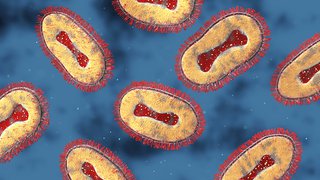5 tips to keep Thanksgiving meals safe and satisfying
November 18, 2020

Thanksgiving is a holiday that revolves around food and family – oftentimes, large portions of both.
But amid the COVID-19 pandemic, those traditions just aren’t practical or prudent.
Household gatherings have contributed to the recent rise in COVID-19 case counts across the country, according to the CDC, and public health officials are urging people to take extra precautions if they’re getting together this year for Thanksgiving.
How much we choose to indulge during the holiday – eating and drinking – can also play a role in our collective health and well-being. Alcohol consumption has increased dramatically during the pandemic, particularly among women.
So, we are offering some practical strategies to help prepare for a Thanksgiving that can be both satisfying and safe.

1. Shop early for savings and safety
Food prices have increased 3.9% since April, so you may want to buy holiday meal items early to spread out the cost a bit. Also, grocery stores are more likely to be crowded the closer we get to Thanksgiving; plan accordingly.
Buying a turkey early should ensure you have a selection of sizes. An 11-pound turkey for a smaller gathering of family and friends should be an ample size. Another option for a group of about four is a boneless turkey breast roast.
If you buy a frozen turkey, remember that thawing can take time – 3-6 days depending on the weight. Place the turkey in a shallow pan and put it on the lowest shelf in the refrigerator to avoid cross contamination with other foods.
2. Make room for traditional foods
Don’t deny yourself traditional holiday treats like stuffing or pumpkin pie, which may only be available once a year. Balance those extra calories by foregoing some foods that are not necessarily unique or special, such as bread/rolls/croissants or potato chips. Those are available any other day of the year.
Modest reductions in carbohydrates and sodium in some traditional foods can also help balance the food “indiscretions” of Thanksgiving week. To lower sodium, don’t add extra salt to the served meal; the turkey, dressing, gravy, and most sides already have salt added during preparation. You can also prepare healthier Thanksgiving favorites by incorporating modifications that are practically unnoticeable! (See recipes below.)
Another key to a healthy Thanksgiving is limiting the leftovers. Cook smaller amounts or plan to give away or freeze some of the food (preferably in individual portions for easy reheating). Eating high-calorie leftovers for days after Thanksgiving can actually be unhealthier than indulging during the Thanksgiving meal itself. Instead, plan a post-holiday activity such as running, biking, or taking a walk around the neighborhood.
Holiday traditions with a healthy twist: Recipes for Thanksgiving favorites
3. Cook and serve food carefully
Anyone preparing Thanksgiving food for a gathering this year should wear a mask while cooking. Also, keep surfaces clean and sanitized, and wash your hands before and after touching raw items.
Limit serving duties to one person and pre-plate as much as possible for appetizers, salads, sides, and desserts; this will eliminate the need for sharing serving utensils. Ramekins are very useful to pre-plate single-serve portions and keep food warm in the oven or cool in the refrigerator.
Lastly, avoid accidental drink sharing by writing your guests’ names on the base of each glass with a water-based marker.

4. Drink in moderation
U.S. Dietary Guidelines suggest that consuming alcohol in moderation translates to one drink per day for women and two for men. During the holidays people are more likely to exceed those recommendations, particularly if they’re attending a celebration or gathering. Consider using a “spacer” – a sparkling water between glasses of wine – to limit your alcohol intake.
Drinking too much can be problematic for a couple of reasons: Alcohol could cause you to let your guard down and relax some of your COVID-19 safety strategies. You may also end up regretting the indulgence the next day and revert to poor eating habits to compensate.
Staying healthy during the holidays
How do we balance the collective craving for a traditional Thanksgiving with concerns brought on by the surging pandemic? Registered dietitian Susan Rodder and Dr. Jaime Almandoz, a weight management expert, share strategies to enjoy the holidays while also maintaining your family’s health and well-being.
5. Remember overeating affects your mental health, too
The holidays can be a stressful time even when there isn’t a global pandemic.
Don’t add to the stress by trying to lose weight at Thanksgiving. Instead, focus on making healthy choices whenever possible and managing your weight. Try to stick to a normal schedule of eating rather than going back and forth to the kitchen for snacks or leftovers just because it’s nearby.
Also, consider limiting the length of a family gathering. Studies have shown that the longer people linger together inside, the more they are putting themselves at risk for transmitting and contracting COVID-19. Ask people to arrive shortly before the meal and say your goodbyes shortly after dessert.
Even though food and family are central to the celebration, they shouldn't be additional points of stress. Stick to your safety strategies and have a happy Thanksgiving.

Clinical Heart and Vascular Center
Leaders in Heart and Vascular Care
Combining attentive, compassionate care with our extensive clinical and research resources, UT Southwestern's cardiology experts and vascular specialists deliver individualized care within pre-eminent health care facilities.











